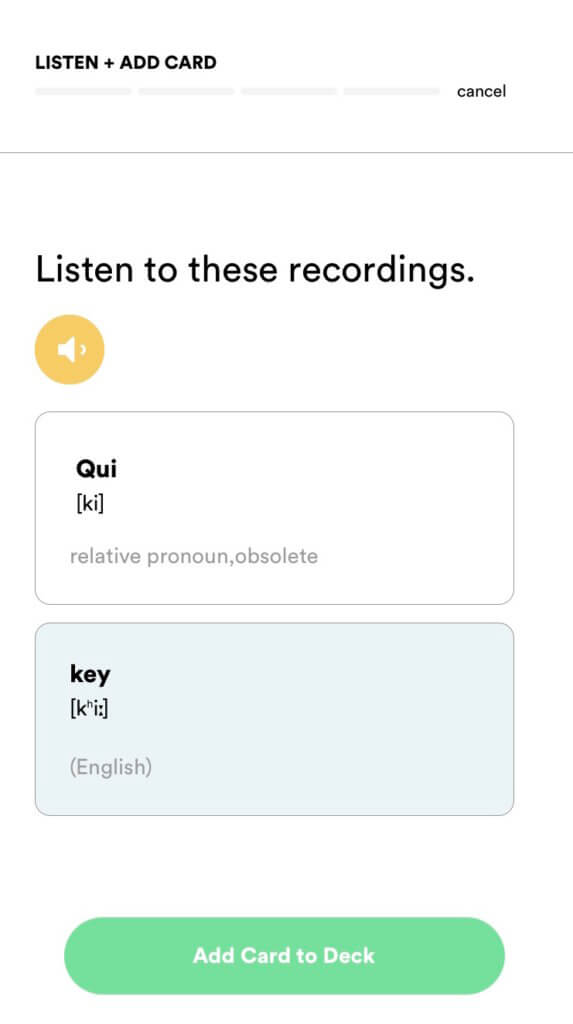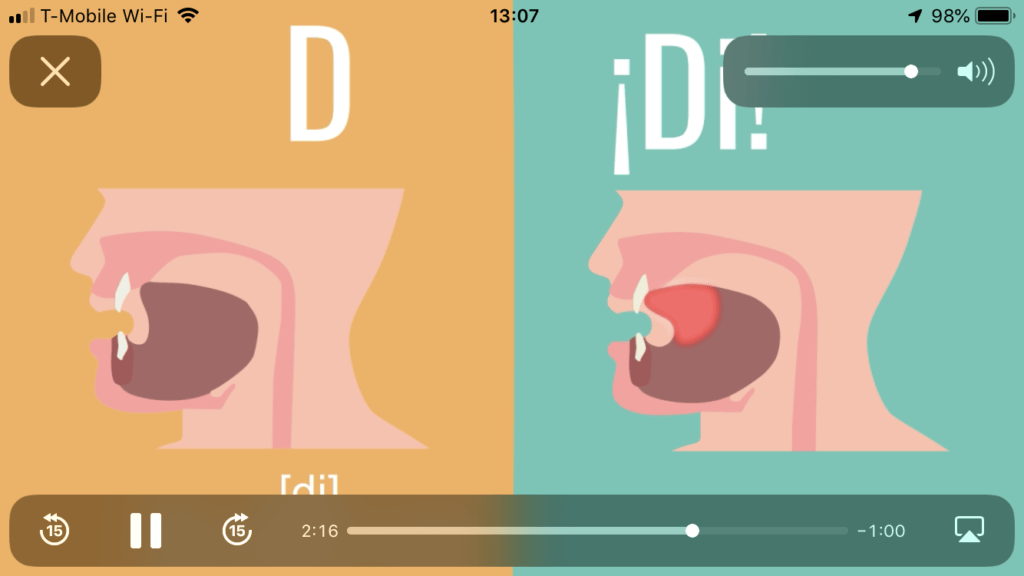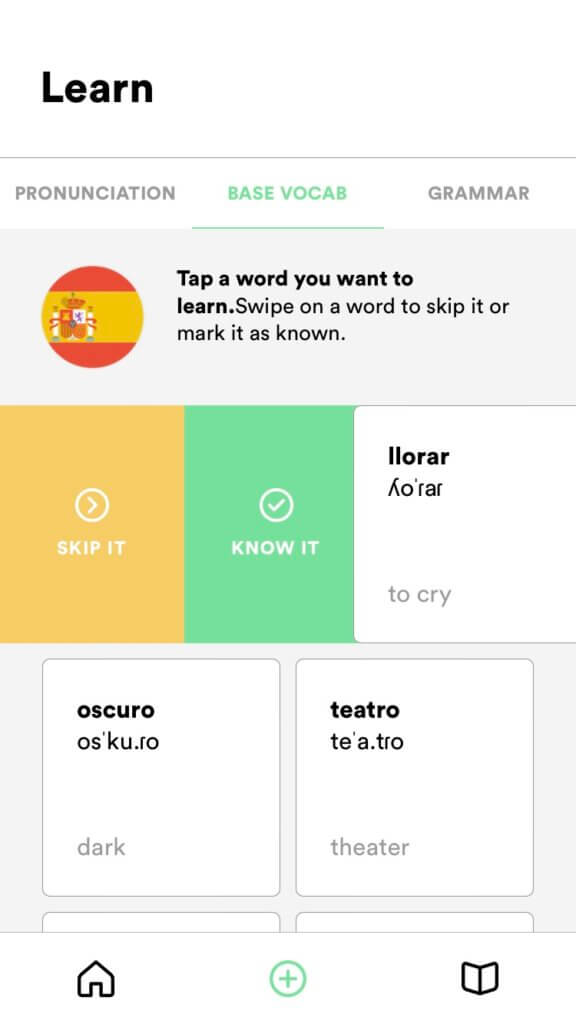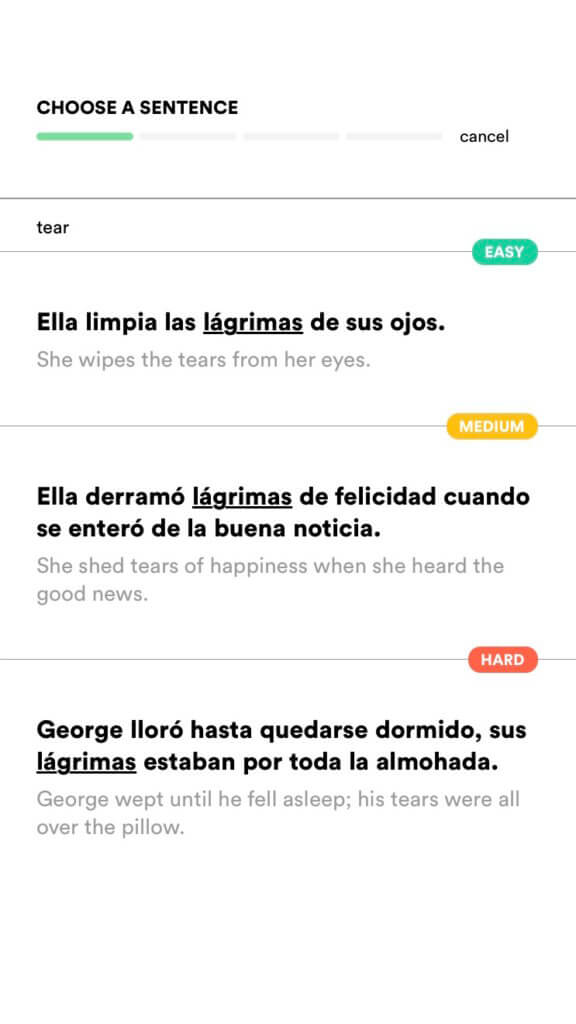No Progress With Duolingo? Here’s What the Owl Gets Wrong
If you’ve been using Duolingo to learn languages, you may have noticed that you’re learning words and completing a bunch of modules/skills… but you don’t really seem to be progressing. In this article, I’d like to go through some of the central issues in Duolingo and what we’re doing at Fluent Forever to address this stuff.
But before we get there, I want to make a brief nod to what Duolingo does really well.
What Duolingo gets Right
Goal Setting and Notifications
Duolingo’s little owl, Duo, has become a brilliantly engineered motivational tool. It’s effective enough that it’s become a meme:
We’ve actually had some users tell us that they’re using Duolingo’s notifications to remind them to use our app, which is hilarious and also brilliant. We’re in the process of working on catching up and adding notifications and things, but it will be some time before we have a reminder system in place that’s as well designed as that owl.
Excellent Gamification and a Wonderful User Interface
Duolingo has done a ton of R&D in ways to gamify the language learning experience so that you can feel good about your daily interactions with their app. From their expansive skill trees, to their satisfying buttons, to the regular rhythm of “You did it!” and “Good job!” success markers, they’re just nailing the pleasure chunks of app design.
Price
It’s hard to beat free. Basic Duolingo is ad-supported and otherwise doesn’t cost you a penny. They have a $9.99 subscription to remove ads, get offline access to courses and allow you to ‘repair’ a daily streak when you miss a day.
So What’s Duolingo Getting Wrong?
1. Translation exercises don’t build language skills…
Duolingo’s most frequent exercises all involve playing around with translations:
Translations are extremely easy to understand. Hello = Hola. Perro = Dog. Easy. It makes for a really straightforward app in terms of knowing what to do and how to do it. But it introduces some really central problems:
- Translations are kind of boring to memorize,
- They’re actually fairly hard to remember long term,
- Translating sentences is quite challenging work (there’s a reason translation jobs are considered jobs rather than recreation activities), and most importantly…
- Practicing translation doesn’t significantly improve your ability to speak a new language.
To expand on that last point, when you think of the word “dog”, your brain brings up thousands of associations, such as:
Various memorable dogs you’ve seen in your life:
Tons of English dog-related vocabulary: wag, tail, animal, pet, mammal, canine, paw, chase, cat, squirrel…
English sounds and grammar associated with ‘dog’: “D-O-G” rhymes with “cog” and “log”. You use “a dog” rather than “an dog” in a sentence. When you have more than one dog, you say ‘dogs’ and then you say ‘dogz’ even though the word is spelled with “S”. Dogs are countable, so you can have 3 dogs, in a way that ‘luggage’ is not (you don’t have ‘3 luggage’).
Tons of memories of dogs: Experiences you’ve had, names of childhood pets, friends’ dogs, emotions you feel about dogs, etc.
If you count them all up, you have tens of thousands of associations with ‘dog’, and that’s what allows you to talk about dogs without worrying whether you’re going to forget how best to use that word in a sentence.
Now…compare that to the associations you have with the Hungarian word kutya. Unless you speak Hungarian, you have approximately…zero associations with that word. If I tell you that “kutya” is the Hungarian word for ‘dog’ then you now have one association with that word. But you don’t know how to pronounce kutya, you don’t know the plural of kutya (it’s kutyák). You have no emotions associated with kutya, nor do you know the Hungarian words for tail, pet, or paw.
If I said ‘kutya’ to you tomorrow, you wouldn’t think of the thousands of different kutyák you’ve seen over your lifespan. At BEST, you would think “that’s the Hungarian word for ‘dog’ “, which would be useful if you were translating a word in an app but it’d be way too slow and unwieldy of a memory for you to be able to talk about kutyák in Hungarian.
…so don’t use translation exercises
If you want to actually build to fluency, you need to get away from translations. In Fluent Forever, we’ll show you a translation the first time you encounter a word:

or a sentence:

and then ask you to choose some images to help you remember what that word/sentence means. But the next time you see that word, there’s no more translation. We want to reinforce connections between your target language words and images or other target language words, because that’s the stuff that actually builds up your fluency.
2. Without proper ear training, words are hard to remember…
Duolingo offers some basic ‘repeat after me’ or ‘type what you hear’ exercises, which would be decent practice for listening comprehension and pronunciation if you had some ear training before you started. But they never teach you how to hear or make the new sounds that show up in your target language, so you’re going to be constantly struggling with those sounds every single time they show up in every single new word.
This isn’t something that solves itself over time, and in fact, practicing exercises like ‘speak this sentence’ can produce bad pronunciation habits that are extremely difficult to undo.
…so work on ear training early
The first thing our app does is train your ears, using a tool known as Minimal Pair Testing, wherein we give you pairs of words that sound similar (caro/carro, bande/bond, d’or/door) and ask you to figure out which one is which. This rapidly rewires your ears to better hear these new sounds.

In addition, we take you through some of the best instructional videos about pronunciation you’ve ever seen, along with detailed flashcards that cover every single spelling rule in your target language, customized with images that you choose yourself.

We don’t want you floundering around with confusing French spelling or German sounds you can’t quite hear…we’d rather you step into learning vocabulary with mastery over the sound system in your target language, because that will let you learn vocab and grammar much faster than you’d otherwise be able to do.
3. Don’t learn from weird sentences (unless you want to)…
Duolingo has a reputation for asking its users to translate the weirdest sentences.
Now I’m actually not opposed to weird sentences; they can sometimes be super memorable. But some users look at this stuff and think ‘wow, this is the least useful sentence I’ve ever seen’, and those users will find working on sentences like these to be excruciatingly boring and annoying. Whereas other users will look at less weird sentences like “I operate machinery in a factory” and find those sentences to be boring and annoying. The problem here isn’t that Duolingo has weird sentences…it’s that Duolingo forces you to interact with sentences whether they’re a good fit for you or not.
…instead, choose the words and sentences you want to learn
When you choose what you want to learn, you learn faster. There’s a reason why language classes get boring when you hit topics like “articles of clothing” and then try and memorize words for blouse/camisole/top/T-Shirt/sweater/jacket/coat/vest/tanktop/etc. Unless you’re really into fashion, you probably don’t want to talk about the differences between camisoles and blouses in a new language. Every time a language learning tool forces you to learn a particular word or a particular sentence, there’s a significant likelihood that that particular word or sentence isn’t something you actually care much about.
So why not focus on the words and sentences that actually matter to you? The Fluent Forever app is all about choice. You can learn any word you see, but you can also skip words you don’t want to learn, or tell our app the words that you already know, so that we get better at serving you more relevant vocabulary over time.

When you start learning sentences, we will always provide you with multiple options at a range of difficulty levels, so that you can pick the sentences that are relevant to you:

4. Prefabricated exercises are okaaaay…
Duolingo’s exercises are basically set in stone. You complete the exercises they give you, and then move on to the next ones in the skill tree. The words are fed to you, the pictures (if there are any) are fed to you, and everything works just fine.
…but customized exercises are way better.
Every learning tool in Fluent Forever gets customized to you. From the pictures you choose, to the words selected, to the review schedules. The app is designed to teach you a language through the process of customizing your own learning materials, and then using those personalized learning materials on a daily basis to help you internalize everything you learn long term. It’s far more effective than prefabricated stuff.
But see for yourself! Fluent Forever is free to try. Give it a couple of weeks, use it on a daily basis (hell, have Duo remind you to do it until we get our notifications figured out!), and experience what real progress feels like.
[shareaholic app="share_buttons" id="28313910"]
















